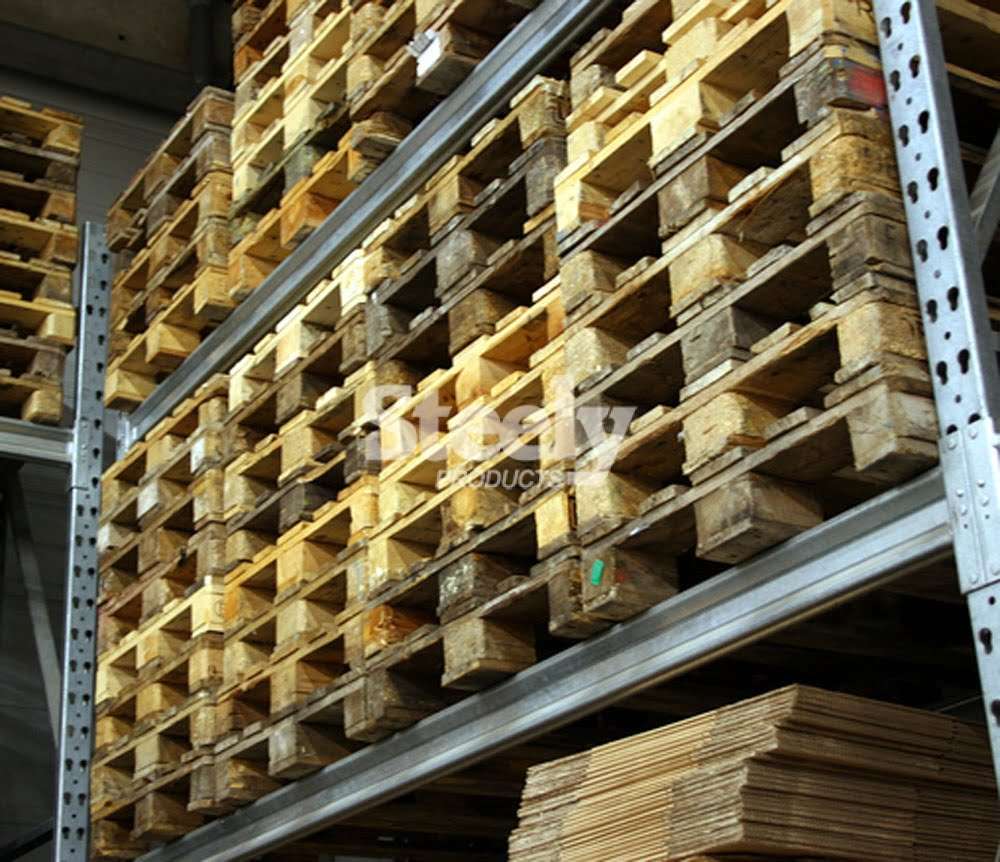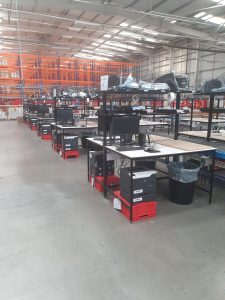Your basket is currently empty!

Warehouses looking to make the most of their capacity must consider how they use available vertical space.
While it’s simple to stack and store goods at ground level, vertical space requires more thought. Fortunately, there are a multitude of strategies operators can adopt to access the full height and floor space of their facility. These include adding new infrastructure like taller pallet racks and mezzanine floors, or using innovative equipment to safely store and retrieve goods that are kept higher and harder to access.
Maximising vertical space helps warehouses improve storage capacity and enhance their operational flow, while avoiding the expense of expanding the footprint of their facility. Here, we look at proven methods of optimising this valuable space on site.
High-rise pallet racking
Among the most basic and effective options, installing robust racking systems that stand higher to use the full height of the warehouse is well worth considering. It’s especially suitable for items that are accessed less frequently. They immediately increase a facility’s storage capacity without needing to extend the surface area of the site. It’s important to note, however, that using high-rise racking requires observing health and safety regulation and involves using suitable lifting apparatus like reach trucks and counterbalance forklifts. Racking must be made from durable materials like high-quality British steel.
Adjustable shelving
Adjustable shelving systems let warehouses adjust shelf heights and configure them to answer changing storage needs. These flexible storage solutions have a range of different shelving systems and can be customised to maximize available vertical space.
Mezzanine floors
Warehouse owners can create extra floors inside their facility with mezzanine structures. These additions offer extra areas for storage and work, making the most of space, but requires considered planning in terms of structural integrity and safe access. Despite such challenges, mezzanines are considered a cost-effective alternative compared to expanding a warehouse itself.
Compact storage solutions
Selecting storage solutions with a smaller footprint that are specifically designed to hold the goods they carry ensures no space is wasted.
Optimised inventory management
This approach involves storing stock by type and size. Larger items are placed lower for ease of access, while smaller items are stored higher up. This increases order picking efficiency but reduces vertical space waste between racks.
FIFO/LIFO Systems
Employing a first in, first out (FIFO) or last in, first out (LIFO) system lets warehouses optimise storage operations by effectively managing inventory shelf-life and flow, which ultimately enhances efficiency. FIFO minimises waste making it an optimum system for storing perishable goods. LIFO systems on the other hand are more suited to works with non-perishable items where warehouses need to distribute items stored last, first. As with optimised inventory management, storing goods needed first lower is always the best approach.
Automated storage solutions
Automated warehouses supply a comprehensive solution to optimise operational efficiency and maximise storage density. Automated systems like pallet shuttles and stacker cranes minimise handling spaces while maximising warehouse storage space.
Vertical Lift Modules or VLMs for short, are automated systems designed to store and retrieve goods. They are specifically designed to move vertically to access or move items. Not only can they enhance picking efficiency, but they also optimise space utilisation.
Warehouse Management Systems
Often referred to simply as WMS, Warehouse Management Systems optimise vertical space onsite by maximising the processes involves in storing and retrieving goods. Systems achieve this in multiple ways. These include efficient put-away and picking strategies, up-to-the-minute inventory tracking and integration with other automated systems like the latest Automated Storage and Retrieval Systems (AS/RS). The benefits of using WMS include enhanced space utilization, faster order fulfilment and reduced warehouse running costs.
Reduce aisle widths
Finally, using narrow racking can effectively reduce the aisle widths in warehouses. This produces more storage space and is especially useful to sites with a limited amount of floor space. Warehouses often find they can save 15-20% of space by decreasing aisle width in the areas with storage racking. However, there are additional cost considerations. Facilities using this option will need to invest in specialised order pickers and forklifts designed to navigate narrow aisles. Furthermore, wire guidance systems are sometimes needed for extremely narrow aisles
Consider one or all of these approaches so no vertical space is wasted in your warehouse.
You may also interested in:

Warehouse operators warned about energy compliance crisis
New energy regulations could render some warehouse space unusable by 2030 due to
The growing demand for warehouse conveyor belts
Research by Global Market Insights shows that the worldwide conveyor market was worth 5.7 billion US dollars in 2024 and is
